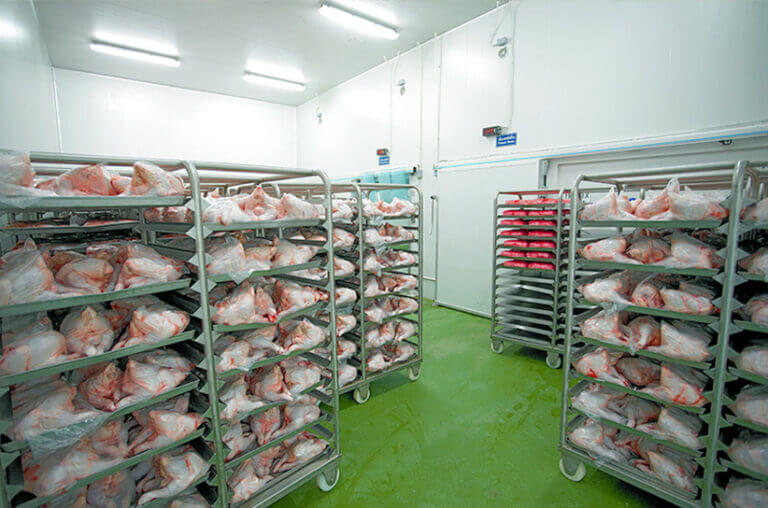Optimal Solutions for Efficient Cold Room Storage of Perishable Foods
High-Quality Cold Room Food Storage Ensuring Freshness and Safety
In the modern food industry, maintaining the quality and safety of perishable goods is of utmost importance. One of the most effective ways to achieve this is through high-quality cold room food storage. These specialized storage facilities are designed to keep various types of food products at optimal temperatures, thereby preserving their freshness, taste, and nutritional value. In this article, we will delve into the benefits of cold room storage, key considerations for optimal design, and best practices for maintaining a high-quality environment.
The Importance of Cold Room Storage
Cold rooms play a crucial role in the supply chain of perishable items. Fresh produce, meat, dairy, and delicacies like seafood require specific temperature conditions to prevent spoilage. According to the United States Department of Agriculture (USDA), bacteria can double in as little as 20 minutes at room temperature, making rapid cooling essential. By utilizing cold rooms, businesses can significantly extend the shelf life of their products, reduce waste, and ensure food safety.
The preservation of food quality is not just about keeping items cold; it's also about maintaining the appropriate humidity levels. High-quality cold rooms are equipped to manage both temperature and humidity, which prevents dehydration and helps retain the food's natural texture and flavor. This ultimately results in higher satisfaction for consumers and reduced returns for businesses.
Key Considerations for Cold Room Design
1. Temperature Control An efficient cold room should have a reliable temperature control system. Typically, refrigeration settings for perishable goods vary for example, most fresh produce is best stored at temperatures between 32°F and 36°F (0°C to 2°C), while meats might require slightly colder environments. Utilizing digital thermostats and sensors can aid in monitoring temperature fluctuations and ensuring that products are stored within their safe temperature range.
2. Insulation Proper insulation is vital for maintaining temperature stability in cold rooms. Insulated panels made from high-quality materials such as polyurethane or polystyrene help reduce energy costs and prevent temperature abuse. Moreover, a well-insulated cold storage room minimizes the risk of condensation, which can lead to bacterial growth and spoilage.
3. Airflow Management Adequate airflow is essential in maintaining uniform temperatures inside cold rooms. Properly designed ventilation systems ensure that cool air circulates evenly throughout the room, preventing hot spots. This is particularly important in larger storage facilities where temperature discrepancies can occur.
high quality cold room food storage

4. Accessibility and Organization To maximize efficiency, cold rooms should be organized in a way that allows for easy access to stored items. Clear labeling, standardized shelving, and designated zones for different food categories can help staff quickly locate products, reducing the time doors are open and maintaining cold temperatures.
Best Practices for Maintaining Cold Room Quality
To ensure that cold room storage remains at optimal quality, it is essential to follow best practices
1. Regular Maintenance Routine checks of the refrigeration systems, door seals, and insulation panels should be conducted to identify and fix potential issues before they escalate. Regular cleaning schedules should also be implemented to prevent contamination and maintain hygiene.
2. Inventory Management Implementing a first-in, first-out (FIFO) inventory system can help minimize food waste. Items that are stocked first should be used first, ensuring that older products don’t sit unused for long periods.
3. Staff Training Educating staff on the importance of temperature control and safe food handling practices is critical in maintaining the quality of stored food. Providing training on the proper use of equipment and emergency protocols for temperature failures can significantly reduce risks.
4. Monitoring Technology Investing in advanced monitoring technologies can provide real-time data on the environment within cold rooms. This can include temperature logging and alert systems that notify staff of any deviations from the set parameters, allowing for quick responses to protect food quality.
Conclusion
High-quality cold room food storage is indispensable for any business dealing with perishable goods. By prioritizing temperature control, proper insulation, airflow management, and organization, businesses can effectively keep their food products fresh and safe. Implementing best practices and regular maintenance not only protects the consumer but also boosts profitability and sustainability in the food industry. Embracing these principles ensures that quality is not compromised, leading to happier customers and a healthier bottom line.
















































































































